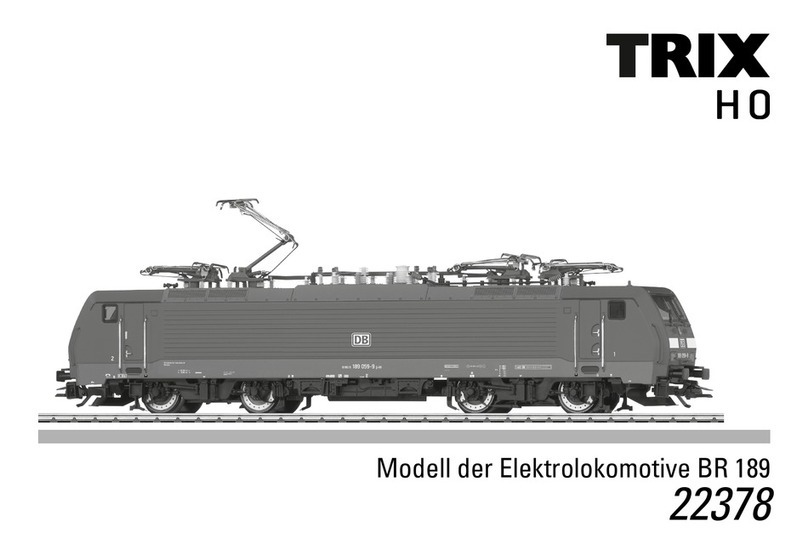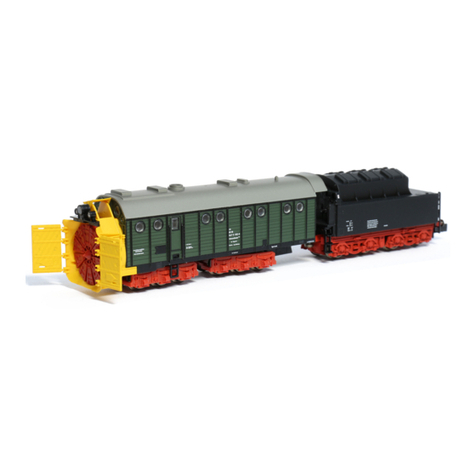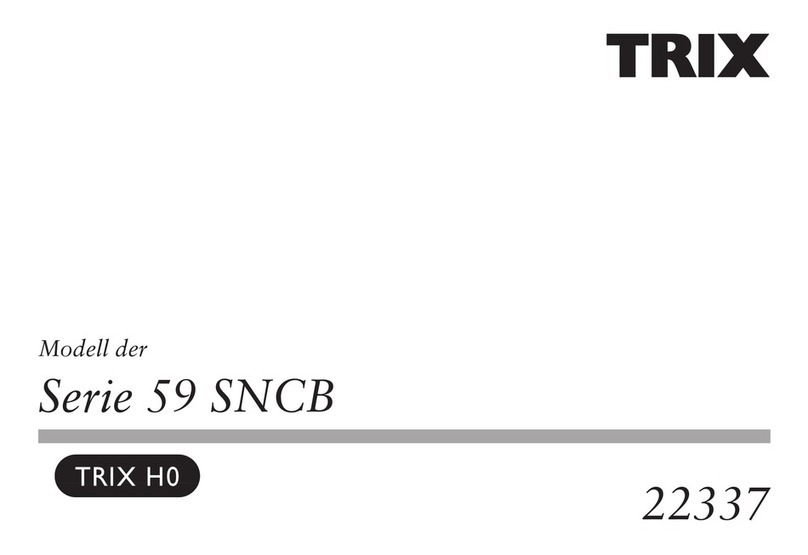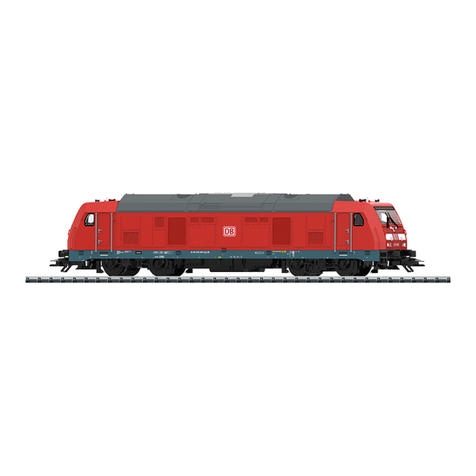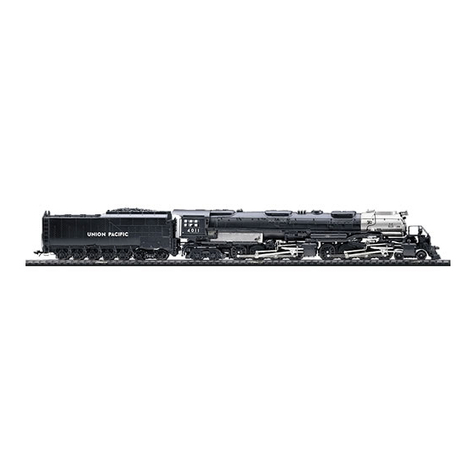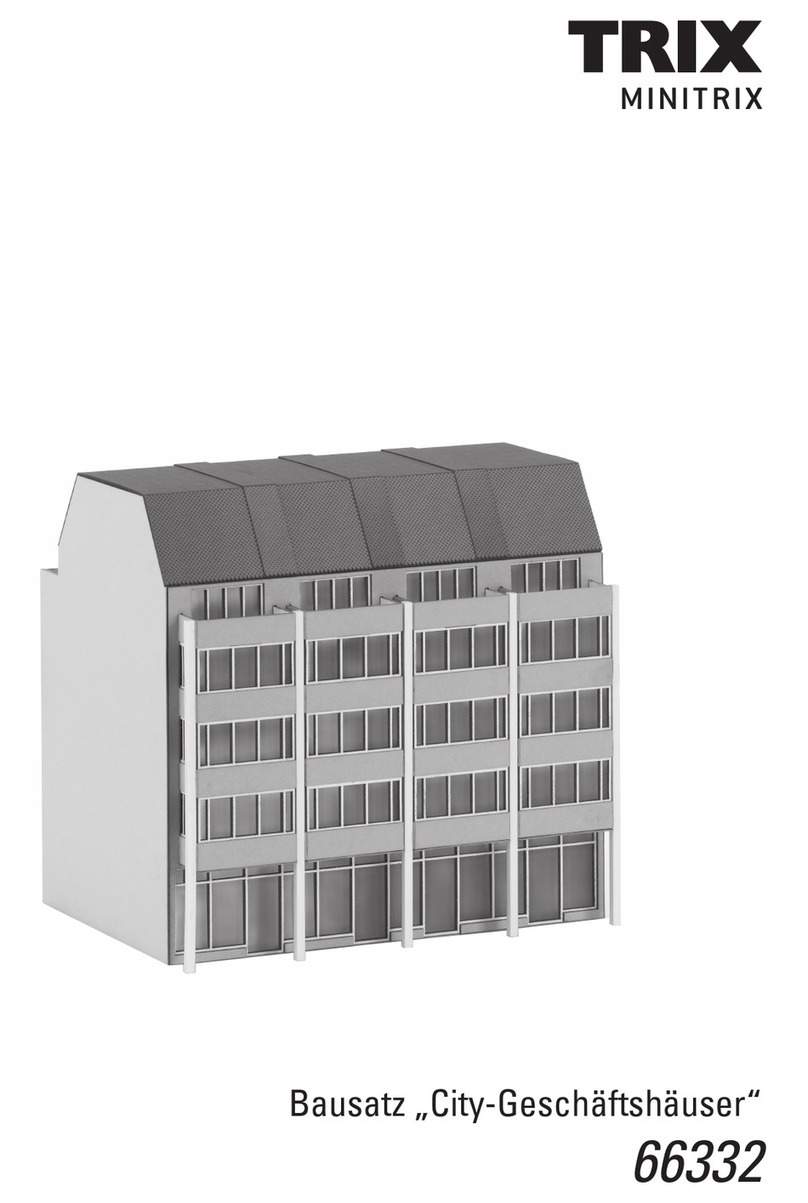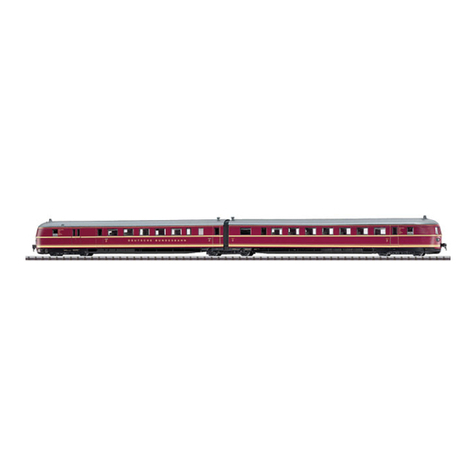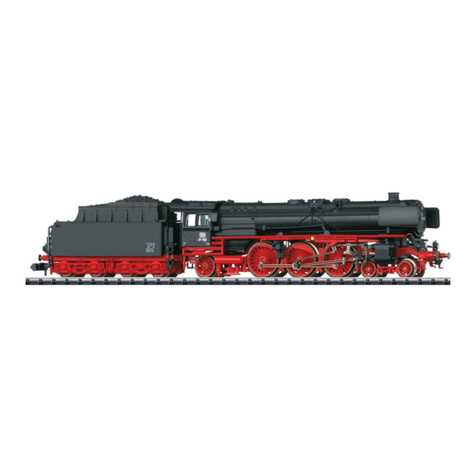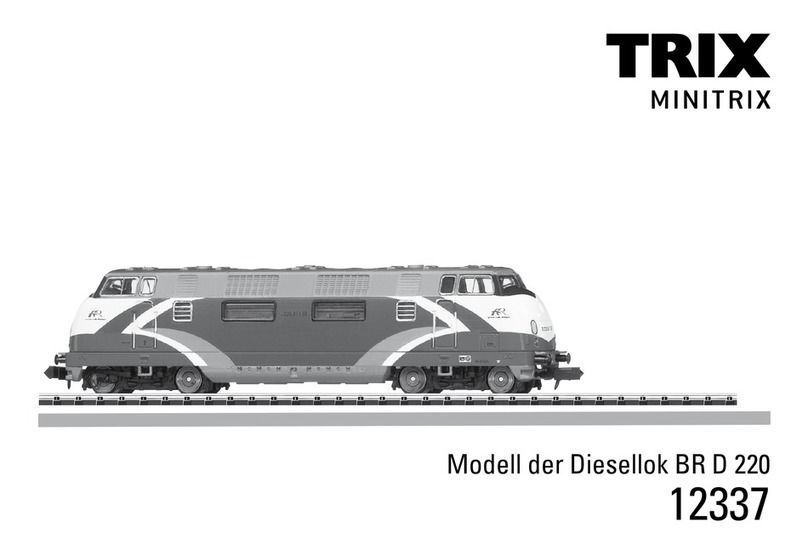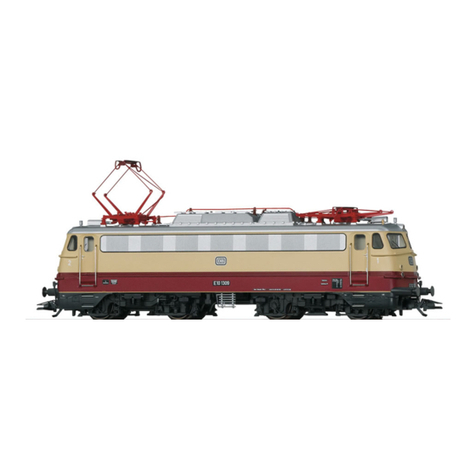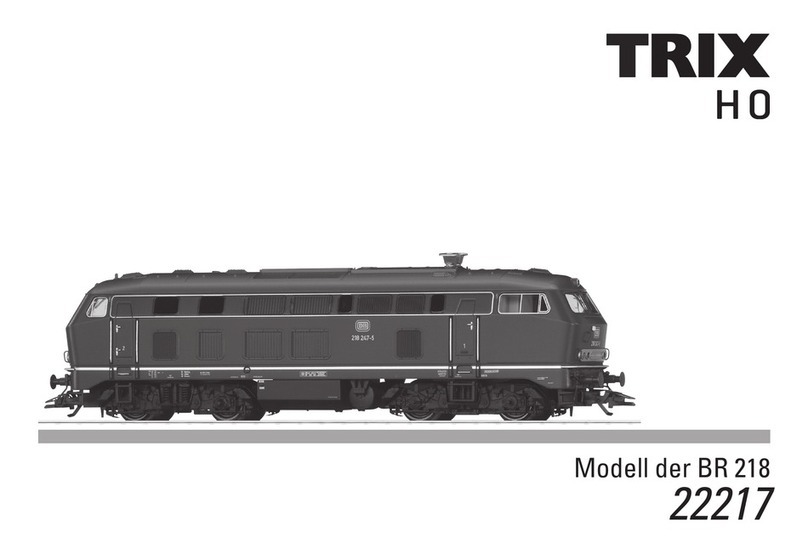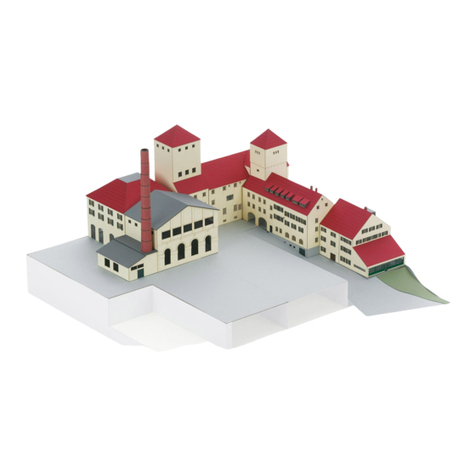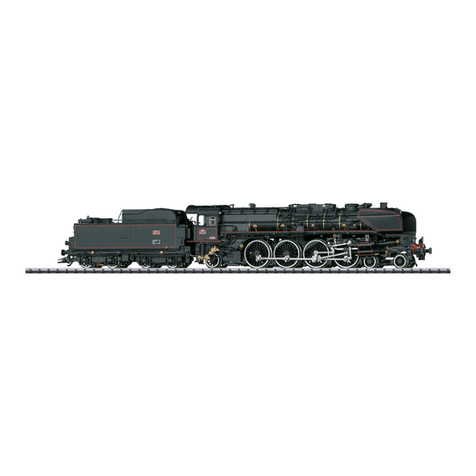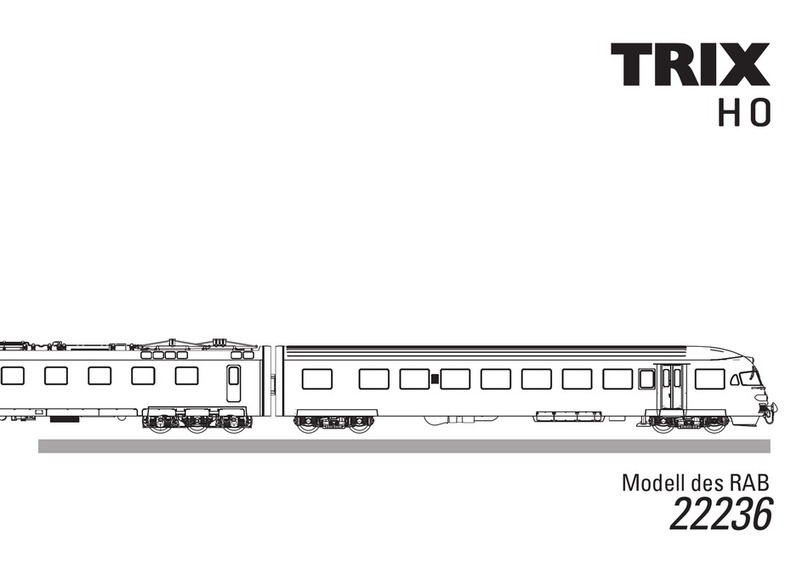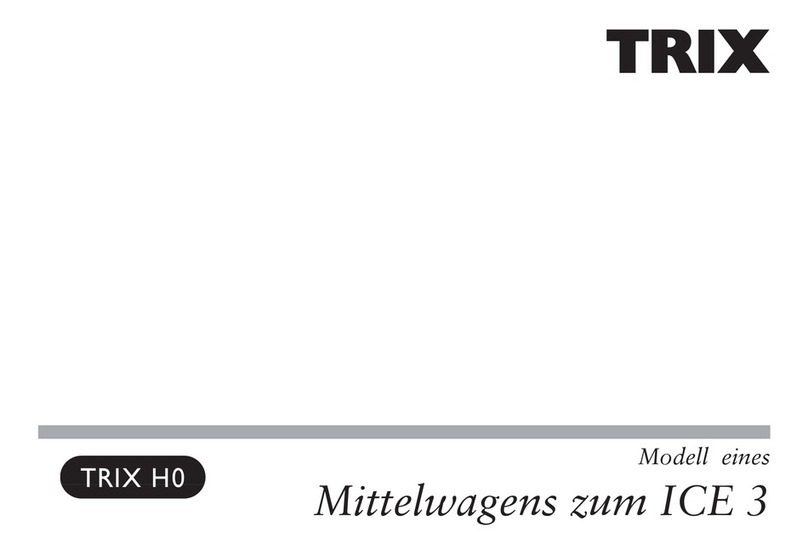6
Fonction
22013, 22017:
•
Le modèle réduit est destiné à être utilisé sur tous les ré-
seaux à deux rails à courant continu (voies selon normes
NEM) avec des transformateursrégulateurs traditionnels
délivrant du courant continu (12 V).
• Cette locomotive est équipée d’une Trix jonction sérielle
électrique pour l’exploitation et peut bénéficier par la
suite du Trix décodeur de véhicules 66839.
• Eclairage des feux de signalisation dépendant
dusens de marche et de la grandeur de la tension
d’alimentation.
22012, 22016:
•
Système d’exploitation autorisé: Conventionnel avec
courant continu selon NEM (± 12 volts =); système digital
multitrain DCC (selon normes NMRA).
• Exploitation Selectrix: la Central Control 2000 doit être
commutée sur exploitation DCC-pour ce train.
• Diverses fonctions lumineuses et sonores commutables en
exploitation avec système DCC.
• Eclairage des feux de signalisation dépendant dusens de
marche et de la grandeur de la tension d’alimentation en
exploitation avec courant continu.
• Uniquement pour exploitation avec système DCC: réglage
de divers paramètres (adresse, vitesse maximale, tempo-
risation de démarrage, temporisation de freinage, volume
sonore). Adresse encodée en usine
: 03.
22012, 22013, 22016, 22017:
• Une exploitation avec des régulateurs de marche
en courant continu est autorisée uniquement si
l’antiparasitage du réseau est suffisant.
Antiparasitage approprié pour la voie C de Trix : 611 655
Les travaux d’entretien dus à un usage normal sont
décrits ci-dessous. Adressez-vous à votre revendeur Trix
pour les réparations et les pièces de rechange.
Tout recours à une garantie commerciale ou contractuelle ou à
une demande de dommages-intérêt est exclu si des pièces non
autorisées par Trix sont intégrées dans les produits Trix et / ou
si les produits Trix sont transformés et que les pièces d’autres
fabricants montées ou la transformation constituent la cause des
défauts et/ou dommages apparus. C’est à la personne et / ou
la société responsable du montage / de la transformation ou au
client qu’incombe la charge de prouver que le montage des pièces
d’autres fabricants sur des produits Trix ou la transformation des
produits Trix n’est pas à l’origine des défauts et ou dommages
apparus.
Remarque sur la sécurité
• La locomotive ne peut être utilisée qu‘avec le système
d‘exploitation indiqué.
• La locomotive ne peut pas être alimentée électrique-
ment par plus d‘une source de courant à la fois.
• Il est impératif de tenir compte des remarques sur la sé-
curité décrites dans le mode d‘emploi de votre système
d‘exploitation.
• Ne pas faire marcher les véhicules motorisés Trix sur
des dispositifs numériques sans avoir installé aupara-
vant un décodeur de locomotive (le moteur peut être
endommagé!).
